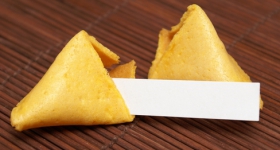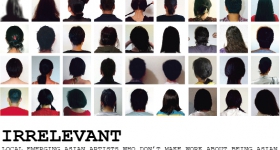I was 9 years old when The Elephant Walk Cookbook was published in 1998. There are several things you need to know about this year, but first, let me tell you a little bit about this cookbook. Filled with 108 recipes, The Elephant Walk is a notable cookbook of Cambodian cuisine with recipes that cover soups, snacks, all major proteins, salads and desserts. It’s comprehensive, and it’s meant to be, given the state of Cambodia at the time. A landscape littered with landmines, Cambodia was obliterated after the carpet bombing of American B-52s in the late 1960s and the subsequent takeover of the Khmer Rouge. What was left in Cambodia after the bombs and the war, and further, what was there before the war started, was worth saving. The Elephant Walk is an attempt to preserve the tastes of Cambodia, as they are remembered by its author, Longteine De Monteiro.
De Monteiro was born to a wealthy family in the capital city of Phnom Penh to educated parents. Her story is unlike many Cambodians, especially those who grew up in the countryside or in poverty, though her ambition to know dishes from every social stratum is shown in the variety of recipes she shares in the book. Some of the language describing dishes is questionably elitist, from talks of servants and getting specific cuts of meat from the local butcher. However, taken in the context of her upbringing while appreciating her efforts, it’s worth taking in the larger scope of what she was trying to accomplish: to document Cambodian recipes in writing. In that way, her writing and side notes for recipes are much more palatable to someone who did not grow up in the same way or perhaps still lives like her servants did.
How we grow up doesn’t mean everything, but it means something.
How we grow up doesn’t mean everything, but it means something.
Mom and I got to the United States in what was one of the last waves of Cambodians being rescued from border camps in Thailand. The border camps were salvation and war wrapped in one. Thousands of refugees were settled into the camps, and as my mom described it, there were the Thai soldiers to the left and the Vietnamese to the right. The land surrounding the border camps was littered with landmines, making escaping deadly and near impossible. Lucky families were rescued by humanitarian efforts, bringing them to countries like France, Australia and the United States. When we arrived in the United States my mom was 17 years old, facing a new country with a newborn (yours truly) of just 11 days. Imagine how alarming it must have been to arrive in the United States and multiply that by about 1000, as we were brought to Vermont of all places. We could not have been further from Cambodia, yet it was home for nearly two decades.
I can’t remember when we got ahold of The Elephant Walk, but I remember seeing it around the house at some point. If we had this book soon after it was published, that would put me at about 9 to 10 years of age. We were still living at the Olde Windsor Village, a prison turned apartment complex in the center of town. The apartment was palatial compared to any home I’d ever lived in, including the tiny city apartment I call home today. We had a three-shelf bookcase that was about as long and heavy as a Honda Civic. I’m sure it was something handed down to us from our sponsors when they helped us furnish our home. On the shelf, there were a few books that I picked up at the school book fair, along with some Asian cookbooks that were often too tall to stand straight up. I always thought it was so curious that we had these cookbooks, since I had never seen my mom cook with one.
There are a few things that I remember distinctly from my childhood, and some that my mom will never forget. In 1998, the Cambodian community learned of the death of Pol Pot, leader of the Khmer Rouge communist group that sparked the genocide of millions of Cambodians. Though the war ended in 1975, aftereffects of the war were felt for over a decade by those held captive in refugee camps, fearing the soldiers that lay hidden in the thickets of the jungle, awaiting their time to reinvigorate the Khmer Rouge’s movement to obliterate. Pol Pot’s death marked an official end to what has been one of the most devastating wars in its history.
How often do fleeing refugees leave one war only to enter another? I don’t want to know the statistic, but what I do know is that I watched my mom endure a war in our own home. Her boyfriend at the time was one of the intellectual ones that would outsmart you with words and break down every ounce of confidence, faith and love in your body. If there was an ounce of good in him, it may have been just that: one ounce of kindness locked away behind his perfectly white teeth he’d floss constantly and muscles he tended to daily. He flexed those muscles often, sometimes with me and my mom. She was strong but was no match for him. One night, I heard them arguing loudly outside my door. I didn’t have to push my ear to the door to hear what they were saying. What I heard next I will never forget. My bedroom sat next to the stairs, which had five steps and a small landing at the bottom before turning into full-length stairs. I heard a scream and two thuds until the house shook with a crash. He had pushed my mom down the stairs, her limbs breaking through the plastered walls. I cried in my room, wondering how this war had invaded our home.
My mom is a fighter. That is how she survived the war in Cambodia, and how we survived one here. She finally left him in 1998. Enough was enough and not only had he proved to be an unfit partner and parental figure, he was cheating on her with her best friend at the time. The thing is, my mom taught me to not make pain the epicenter of our lives, and because of that shift in perspective, I remember my childhood as vignettes of happier moments with my mom, where more often than not, we were either cooking or eating. In the kitchen I was her sidekick, quite literally stuck to her hip while she cooked dinners for us. It was a tiny kitchen, but it was a place where I could taste the foods and ingredients of what my mom grew up eating in Cambodia. Getting the ingredients was tricky, but we’d venture down to the Asian grocery store about once a month to grab bags of rice, bright herbs, jars of bamboo shoots and spices you couldn’t find at our local Price Chopper. In the kitchen, she would show me how to pick the tender basil leaves off the stems and how to cut a pineapple, losing as little of the sweet meat as possible during the peeling of its hardy exterior. I can remember coming home, crying after a peer taunted me for eating cat food at the lunch table. Hardly cat food, my mom’s somlar machu was a chicken soup we made often that I craved constantly. The recipe in The Elephant Walk is slightly different from my mom’s version, but still gives me the familiar smells and tastes I remember from my very happy childhood.
In this way, my mom was preserving Cambodian cuisine in our home, instilling recipes that she had learned growing up. Perhaps some of her cooking was influenced by books like The Elephant Walk, but most likely was not. In my eyes, the book served as proof of a beautiful cuisine that existed just over the ocean, in a place she lived, ate and breathed. When the Khmer Rouge invaded, they destroyed written works, executed intellectuals, professionals and those deemed to be a threat to the existence of their regime. The arts, including culinary, were in danger of being lost forever as many of their teachers and guides had died. This cookbook preserved at least some of it for Khmer kids like me to read through, taste with and develop our own ideas about Cambodia and its cuisine. I would like to think that De Monteiro was writing this cookbook to get the recipes of dishes she had eaten from the Cambodia she remembered down on paper in the hopes that someone like me could learn about their roots.
For kids like me, Cambodia is more like a figment of the imagination and a place learned through dishes like the ones in The Elephant Walk. I never shook my interest in cooking, as I’ve always studied or worked in food throughout my life. As a graduate student at New York University, I took a deep dive into Cambodian cuisine, learning about its history, agriculture, fishing and politics. My studies culminated in a trip to Cambodia, exactly 30 years to the day from when we left. The trip was fulfilling and ultimately pretty overwhelming, in the way that I felt that most of the things I tasted were new. I had never tasted prahok (fermented fish paste) or eaten fresh jasmine rice, both staples of the Cambodian diet. In The Elephant Walk, for practical reasons, prahok is made optional. I’m not sure what the access to ingredients was like back when this book was published, but I’m sure it was even more limited than what it is now. Having traveled to Cambodia, I can confidently say the recipes are quite different from the dishes I tasted of the same namesake, but that’s a facet of changing times. De Monteiro really preserves food not only from her specific memories but from an equally specific time in history. And as the landscape continues to change, whether it’s climate-related or political, I would argue that the food being produced today has a different relevance.
The Elephant Walk Cookbook has been less of a guide and more of a historical document and a way to understand De Monteiro’s experience. It’s funny when objects are used for things other than their designated function. After zooming in and dissecting every word, it’s worth stepping back to appreciate the book in its context and historical significance. Ask my mom what it was like living in the refugee camps and she’ll tell you about the dishes she learned to make. Ask me about my childhood and I’ll tell you it was spent cooking with my mom, and after 30 plus years on this earth, I find it’s helpful to do the same thing and step out of the moments of abuse, tears and love and see where food has woven its way through it all. While this book has been less of a reference point for me, it has always been on my shelf, as a reminder of who I am, where I’ve been and how far we’ve come since 1998.










Comments